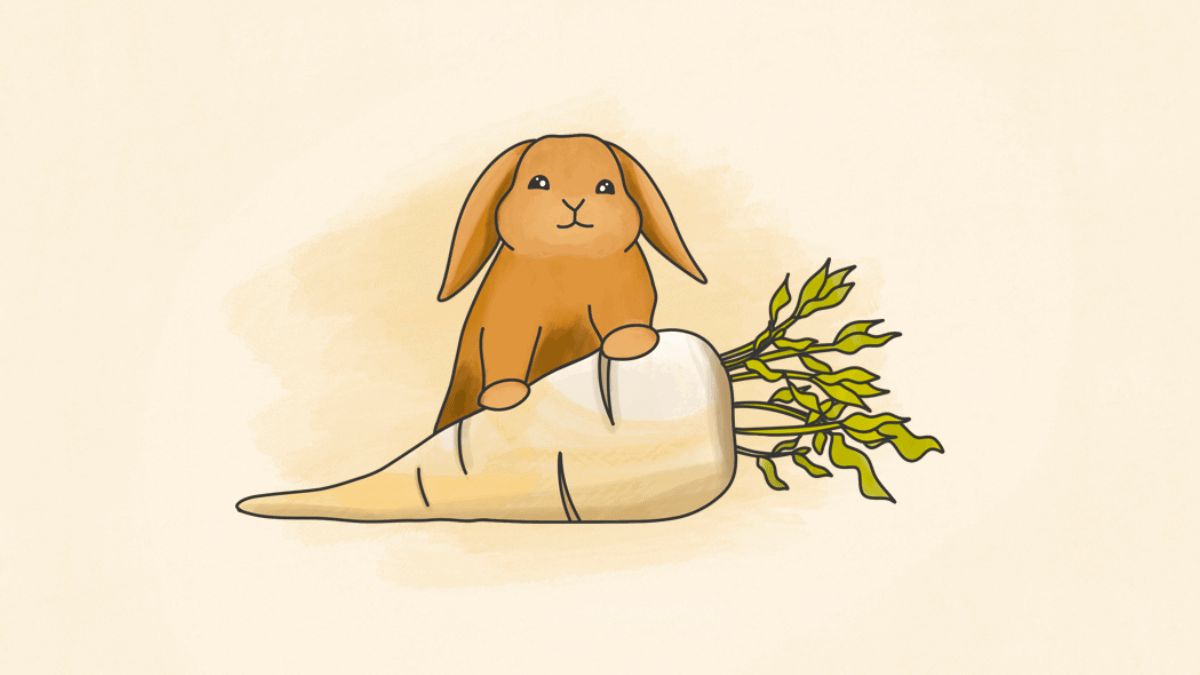Savoirs
Parsnips for Rabbits

Parsnips in practice for rabbits
With its funny face reminiscent of a carrot that hasn’t seen the sun in a long time, parsnips are one of the vegetables that may be considered as a treat and which rabbits love.
How come a vegetable can be considered as a treat? Simply because it is a vegetable rich in sugars that is as much appreciated as it must be rationed.
However, it has many qualities that make it particularly interesting and ideal for occasional use (2 to 3 pieces or slices per week): rich in vitamin C, potassium, fiber, low in calcium (phospho-calcium ratio of 0.55), it is also an excellent diuretic.
So take advantage of its presence on the stalls to offer it from time to time to your little companion, who will enjoy it and take advantage of all its benefits.
See the detailed composition of parsnip for rabbits here
Origin of parsnip
Parsnip is one of those ancient vegetables, cultivated for centuries, then forgotten, not to say dethroned, by the potato when it arrived in the 16th century.
We find traces of its cultivation since the Antiquity by the Greeks, then by the Romans. However, the Romans did not seem to appreciate it, and limited its use to its medicinal virtues. Its name, parsnip, comes from the Latin panacem, which means remedy.
It was not until the 6th century AD that the work of selection began, discarding the hard and fibrous varieties in favor of softer subjects. This vegetable then found its place in our plate, as well as in that of farm animals.
In the Middle Ages, it was one of the hundred or so species cultivated in monasteries, listed in the Capitular De Villis. However, it was not until the Renaissance that parsnip was truly differentiated from the carrot with which it was still confused.
Preservation
Parsnip is a tuber that does not tolerate heat. It should therefore be kept cool and away from light, in a cloth bag or slightly dampened paper towel, in the crisper of your refrigerator. It can be kept this way for up to a week.
If you are lucky enough to have a cellar, feel free to store your parsnips in a crate filled with slightly damp sand (garden center sand, not beach sand 😉 ). This will keep them longer, and they can share their crate with a few carrots that keep the same way.
Recipe with parsnips for humans
Parsnips can be eaten raw or cooked. So to enjoy all its flavors, try this very simple recipe for pan-fried parsnips:
Sautéed Parsnips
Ingredients for 2 people: 2 parsnips (or more), and a little fat (butter or oil).
Wash and brush your parsnips under running water. If they are organic vegetables, there is no need to peel them. If not, peel them with a vegetable peeler. Remove the first centimeters of the tuber, which are often fibrous.
Cut the parsnips into sticks and cook them for 15 to 20 minutes in a large volume of boiling water.
At the end of this first cooking, drain the parsnips, then make them return to the frying pan, in a little fat, on average fire, until golden brown.
Season with salt and pepper and serve immediately, garnished with herbs if desired.
Seasonality
You’ll find it on the stalls from October to February, with this availability varying with the year’s weather data.
Watch out for late season parsnips that are sometimes hard and very fibrous.
Translated from French by Margaux

 Food
Food Essentials
Essentials Toys
Toys Accessories
Accessories Goodies
Goodies

